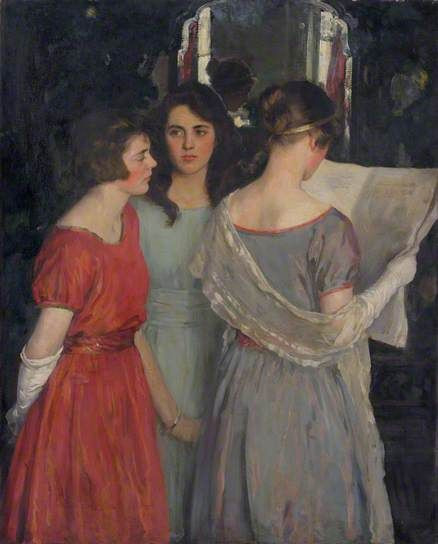Recently, I've been fielding questions about guided reading (à la Fountas and Pinnell) and the Common Core; mainly about the differences in how they place students in texts. Before going there, let me point out that there is a lot of common ground between guided reading and Common Core, including a focus on high-quality text, the emphasis on connections between reading and writing, the concern for high-level questions and discussion, the idea that students learn from reading, and so on. Nary a hint of conflict between the two approaches on any of those issues.
Not so with student-book placements; on that, there is a substantial divide. Guided reading says to go easy, and common core says challenge them. Easy, according to F and P, means placing kids in books that they can read with better than 95% accuracy and with high reading comprehension (and they make no distinction between beginners and more adept readers in this regard). For Common Core, making it challenging means placing students, second grade up, in books that would be in the frustration range according to F and P; books that students would read with markedly lower fluency and comprehension on a first read.
How can these schemes be so different?
Fountas and Pinnell advocate for a system of text placement that has been widely and long accepted in the field of reading (I've previously written about the sources of those ideas). F and P add to that a philosophical position that maintains students learn best by figuring things out themselves from reading, rather than from the explicit instruction a teacher might provide. In their plan, much of the teacher’s work is devoted to accomplishing an appropriate placement of students in texts, and they strive to minimize the distance between what text demands and what students can do currently so that students can scale these small challenges without much teacher input.
Anything in the text that the students can't handle themselves can be reduced even more, in the F and P scheme, by providing substantial background information about the text, picture walks and the like. Over time, by reading texts that are supposed to gradually get harder, students learn to read by reading books that they understand and enjoy. F and P are candid that book placement does not always work out and that, under such circumstances, teachers may have to provide mini-lessons or other supports. Nevertheless, they stress the importance of minimizing the need for such supports. As good a job as they do in demonstrating how to get students to the correctly leveled texts, they provide surprisingly little info about how and when to advance students to higher levels; students may languish at a level since there is no well-worked out plan for ensuring progress (and I see that a lot in classrooms--children who spend inordinate amounts of time stuck at "their level").
By contrast, Common Core sets text levels on the basis of where we have to get students to by the time they end school. Consequently, they set higher levels for each grade (grades 2-12) than we did in the past, and it discourages the kind of out-of-level teaching that is so characteristic of guided reading plans. The reason for this is that many kids now leave high school reading below the levels needed in college, in the workplace, and in the military. This means that most state educational standards require that teachers teach kids to read texts of particular levels of difficulty--rather than at the students' supposed levels.
These more challenging text placements presume that teachers will provide extensive scaffolding, explanation, support, and teaching to enable success. Since the Common Core is not, by and large, invested in any particular instructional methods (the push for close reading is a notable exception), it can require text levels based on learning goals and the very real need of students to reach particular levels before they graduate, rather than trimming text levels to fit pedagogical philosophy.
I think most advocates of Common Core would say, “The issue is not how much teaching teachers have to do, but how much students can learn in the time we are working with them. If teaching students with more challenging texts leads to greater amounts of learning, then we accept the burden of having to teach more.” Fountas and Pinnell, too, want kids to learn, but their philosophy is that this learning works best when kids negotiate the reading system on their own, and that justifies, for them, the idea of not demanding too much of kids in terms of text difficulty. For F and P how you learn is as important as what you learn.
F and P’s version of guided reading has been around for almost 20 years, but there are other versions of the idea that go back much further--to the 1940s. One would assume that there must be a lot of research evidence supporting guided reading, given how long it has been espoused. One would be wrong in the assumption. Studies don't actually support the idea of teaching kids with books at their levels; the leveling idea is one that was just made up, and then when it was finally tested, it was found to fall short of the goal.
Many teachers might respond: “Studies or no studies, I know guided reading works because I have taught with it and my students make good progress.”
There is absolutely no question that students can learn with guided reading (that they have learned with it, and that they will continue to learn with it). I was taught to read 60 years ago by what most teachers would call guided reading. It is widely used in American schools and has been for generations. But there is an issue of opportunity cost here; would students learn more if we did it differently; if we taught students with more challenging texts? Teachers, of course, can never gauge the success of the alternatives that were not tried.
Studies, quoted in previous blogs, show that students can make learning progress while matched to a variety of text levels, though they tend to do best when matched with more challenging texts than the guided reading advocates have recommended. Thus, placing students in easy text CAN allow learning to happen, but placing students in more challenging texts and then making sure they can successfully read those texts (through rereading, analysis of information, etc.) can lead to even greater success.
At the end of the day, for guided reading advocates, the disagreement is philosophical rather than empirical—for them, it is about the desirability of a particular approach to teaching. They believe that it is better for kids to figure things out with minimal teacher support, so they necessarily must limit the degree of challenge that students face; too much book difficulty would only lead to failure and frustration in that kind of scheme. However, if, on the other hand, your desire is for kids to read well enough to function independently and successfully in society, then it will be necessary to teach kids to do things they can't already do. In that case, intentionally limiting text difficulty would reduce students' opportunity to learn--a no-no, of course, if greater learning is the goal.
In general, I think the Common Core approach is the right one – it puts greater emphasis on teaching and long-range learning goals than on text placement. And, yet, we are depending on educators –including me – who received more preparation in how to place students in relatively easy books, than to teach them to read harder ones. The success of the Common Core (and public education) depends not just on the requirement for more challenging texts, buying new texts or relabeling what's in the book room is the easy part. Success will be accomplished only if teachers will have the resolve, patience, and foresight to provide the sufficient and appropriate scaffolding needed to allow the students to figure out the meaning of challenging texts without being told what they say.







Comments
See what others have to say about this topic.